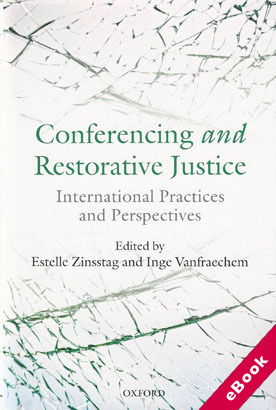
The device(s) you use to access the eBook content must be authorized with an Adobe ID before you download the product otherwise it will fail to register correctly.
For further information see https://www.wildy.com/ebook-formats
Once the order is confirmed an automated e-mail will be sent to you to allow you to download the eBook.
All eBooks are supplied firm sale and cannot be returned. If you believe there is a fault with your eBook then contact us on ebooks@wildy.com and we will help in resolving the issue. This does not affect your statutory rights.
Conferencing and Restorative Justice: International Practices and Perspectives offers an analysis of conferencing practices around the world, examining the range of approaches to different types of crimes and offender age groups, and assessing their outcomes.
First developed in New Zealand and Australia in the 1990s, conferencing is a restorative justice practice which has since spread to a number of other countries as an effective tool in crime reduction. By encouraging the offender, the victim(s) and family members, and a facilitator to meet and discuss the crime and its consequences, and then to find a just and acceptable outcome for all, those involved hope to repair the harm inflicted upon the victim, the community and society in general.
In this book, the editors have drawn together some of the leading figures in the restorative justice community to look at the current condition of such practices, particularly internationally, and to analyse the processes and outcomes of conferencing, compared with the European-favoured, victim-offender mediation.
With fourteen chapters featuring a mix of contributors, including both practitioners and academics, the book begins with a general and thematic overview of what conferencing is and how it is developing theoretically and in practice. This discussion then moves on to some of the original models of conferencing, such as in New Zealand and Australia, and examines some of the challenges (sexual assault cases) and the newer developments found in conferencing in Latin-America.
The final section of the book consists of European perspectives on conferencing, exploring how some countries have developed conferencing more extensively (such as into the juvenile justice system), others are still in a starting-phase, whilst some have move conferencing outside of the justice system entirely. Impeccably researched and thoughtfully presented, Conferencing and Restorative Justice will be of interest to anyone involved in restorative justice practices, criminal justice and public policy.